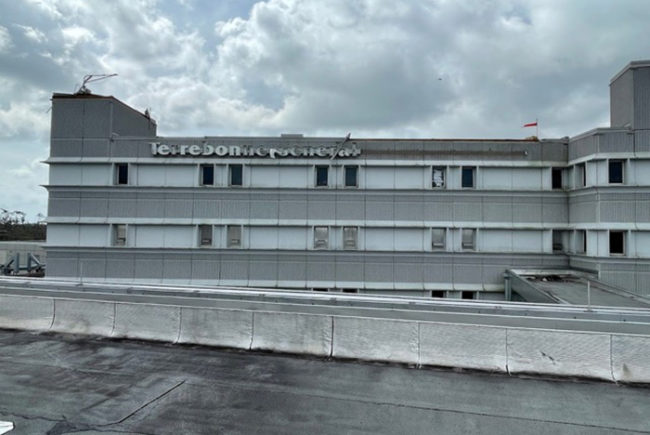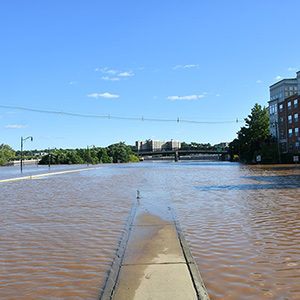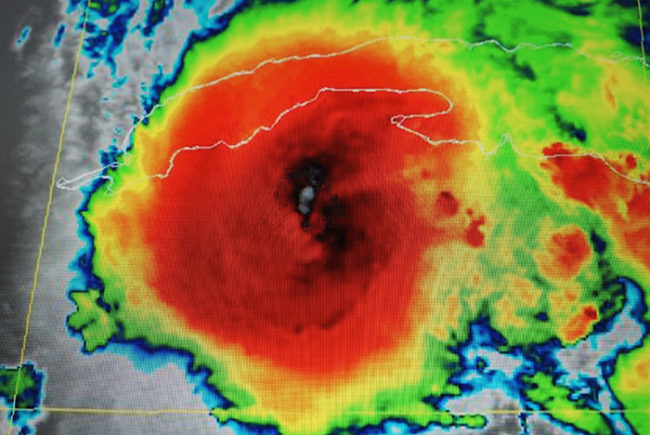Editor’s note: This article is the second in a series on the impact of Hurricane Ida on health care facilities, the experiences of health care facilities managers in affected areas, and hurricane preparedness and response.
Extreme weather events are posing challenges to even the best-laid emergency preparedness and response plans. Holy Name Medical Center in Teaneck, N.J., has a well-established emergency response plan in place and staff who experienced Hurricane Sandy in 2012. Still, the severe flooding that resulted from Hurricane Ida in September was unexpected, and the facility’s staff had to pull together quickly to respond.
George Young, CHFM, is director of facilities management at the 350-bed licensed acute care facility with 750,000 square feet of space. He and his staff knew the hurricane would bring heavy rains, and preparations included roof inspections and drain clearing. But, he says, nothing prepared them for the amount of water that flowed into the facility and how fast it came.
“We took on significant water through our emergency department, which is at grade level in the back of the building,” Young says. “There was a torrent of water that came in through an automatic door. That found its way down to the lobby level and then down to the lower basement level. So there were three levels of significant damage. On top of that, we had significant damage to our boiler plant, with almost four feet of water, and lost two boilers.”
The facility maintained power because it has dual feeds where one feed automatically transfers to the other if it is lost. But it was necessary to bring in a temporary boiler on the back of a tractor trailer the next day. “We were back up and running with our sterilization and humidification, so we were able to keep the building comfortable for people,” Young notes.
Young says Hurricane Ida is another example of how the impacts of these weather events cannot always be predicted. “People who have been here for 40 years told me that they had never seen anything even remotely close to this, even during Superstorm Sandy,” he says. “We had extra staff on hand, and we expected roof leaks and maybe some window caulking and masonry leaks that we had in the past. But this amount of water in the building was more than we had ever seen before. Elevator shafts were flooded all the way up to the floor levels.”
The ability of the Holy Name Medical Center staff to pivot quickly and pitch in wherever it was needed meant the emergency department reopened after just 10 hours to full patient care. “Everyone from the whole hospital was lending a hand and doing everything they could to help,” Young says. “The CEO, the executive vice president, the operations manager were working squeegees. The manager of EVS was riding a cart around. Our elevator people came in and within four hours, we had at least a couple of elevators running. The nursing staff did a great job keeping everybody abreast of what was happening on our patient care floors.”
Young recognizes that the Hurricane Ida experience is an opportunity to learn about what his facility could be facing in the future. “Obviously, we will be better prepared the next time,” he says. “We’re going to take a step back right now. There will be time later to sit back and say, If we had knee wall cement in the wall here, we could have prevented water getting into the boiler plant. Those are the kinds of things that we haven’t done yet, but we certainly will.”
While planning and preparation are essential, the staff and leadership at Holy Name Medical Center have also been willing to deal with the unexpected consequences of Hurricane Ida. “The rebuilding process began immediately and will take several months,” Young says. “Through that process, we are seeing the can-do spirit that I have come to expect in my time here. The camaraderie across all departments and the fact that we were able to open the doors the next morning are tremendous successes. The focus was on the patients who needed to come here for our help and what we had to do to get that done.”
Learn More
The U.S. Department of Labor Occupational Safety and Health Administration (OSHA) has hurricane preparedness and response resources available, including information about hazard exposures and risk assessments in hurricane response and recovery situations.
The Health and Human Services Office of the Assistant Secretary for Preparedness and Response (ASPR) Technical Resources, Assistance Center, and Information Exchange (TRACIE) has compiled hurricane preparation and response information, including Hurricane Resources at Your Fingertips, Major Hurricanes: Potential Health and Medical Implications, and After the Flood: Mold-Specific Resources.





